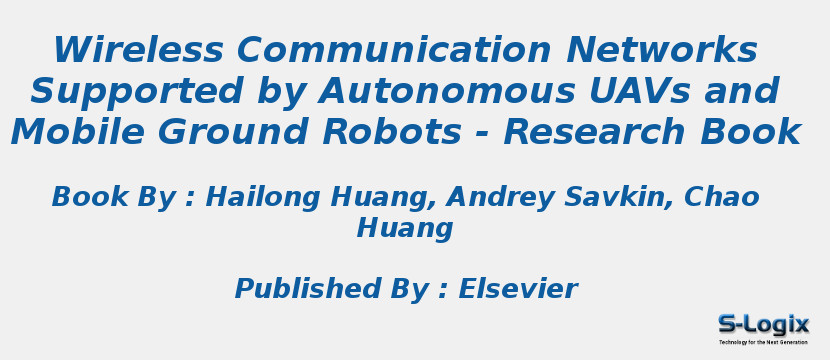Author(s) Name: Hailong Huang, Andrey Savkin, Chao Huang
Wireless Communication Networks Supported by Autonomous UAVs and Mobile Ground Robots covers wireless sensor networks and cellular networks. For wireless sensor networks, the book presents approaches using mobile robots or UAVs to collect sensory data from sensor nodes. For cellular networks, it discusses the approaches to using UAVs to work as aerial base stations to serve cellular users. In addition, the book covers the challenges involved in these two networks, existing approaches (e.g., how to use the public transportation vehicles to play the role of mobile sinks to collect sensory data from sensor nodes), and potential methods to address open questions.
Table of Contents
1: Introduction
1.1. Autonomous vehicles in wireless communication networks
1.2. Overview and organization of the book
2: Survey of approaches for wireless communication networks supported by ground robots
2.1. Introduction
2.2. WSNs supported by mobile robots
3: Wireless communication networks supported by autonomous UAVs: a survey
3.1. Introduction
3.2. UAVs serve humans and WSNs
3.3. UAVs collaborating with WSNs
3.4. Discussion and future research directions
4: Data collection in wireless sensor networks by ground robots with full freedom
4.1. Motivation
4.2. System model and problem statement
4.3. Shortest viable path planning
4.4. k-Shortest viable path planning
5: Data collection in wireless sensor networks by ground robots with fixed trajectories
5.1. Motivation
5.2. Network model
5.3. Routing protocol
5.4. Protocol analysis
6: Energy-efficient path planning of a solar-powered UAV for secure communication in the presence of eavesdroppers and no-fly zones
6.1. Motivation
6.2. Problem statement
6.3. Navigation law
7: Multiobjective path planning of a solar-powered UAV for secure communication in urban environments with eavesdropping avoidance
7.1. Motivation
7.2. Problem statement
7.3. RRT-based path planning
8: Reactive deployment of UAV base stations for providing wireless communication services
8.1. Motivation
8.2. Problem statement
8.3. Proposed solution
9: Optimized deployment of UAV base stations for providing wireless communication service in urban environments
9.1. Motivation
9.2. System model and problem statement
9.3. Proposed solution
10: Energy-efficient path planning of solar-powered UAVs for communicating with mobile ground users in urban environments
10.1. Motivation
10.2. Related work
10.3. System model and problem statement
10.4. Proposed navigation method
10.5. Simulations
10.6. Summary
ISBN: 9780323901826
Publisher: Elsevier
Year of Publication: 2022
Book Link: Home Page Url
